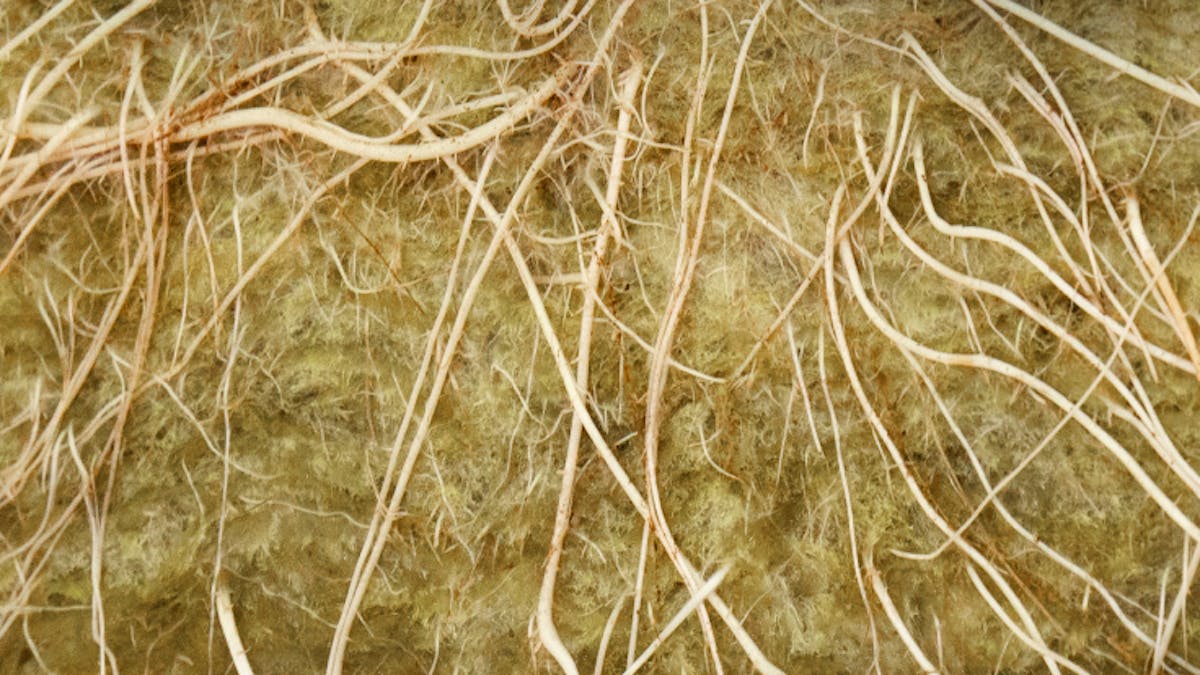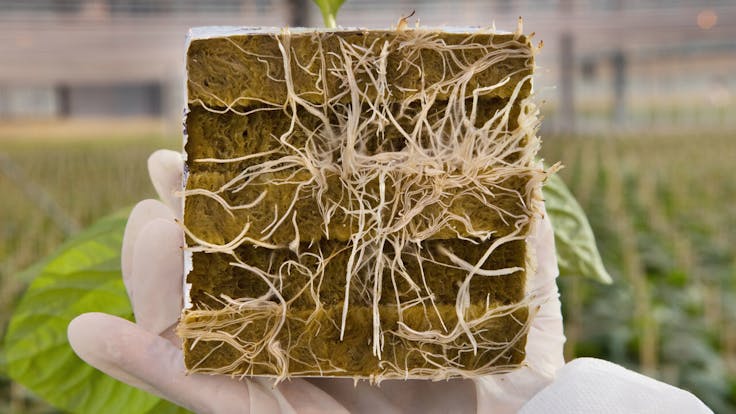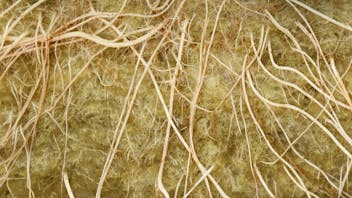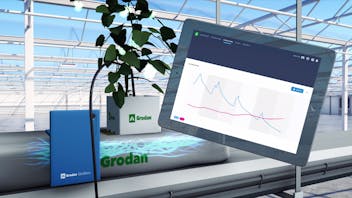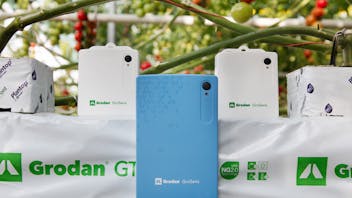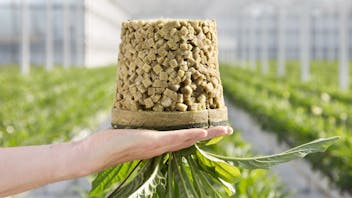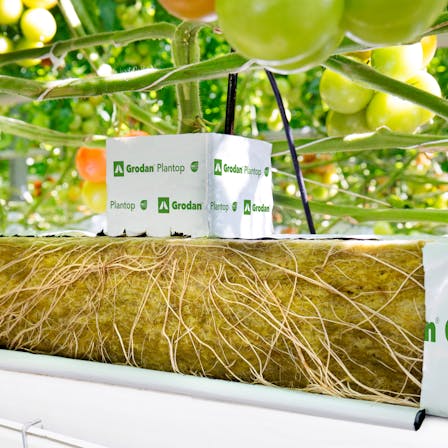Plant growth is the result of a continuous cycle of chemical and physical changes, including photosynthesis, respiration and transpiration. Whereas a plant’s leaves are important for extracting CO2 and light from the air to facilitate photosynthesis, its roots form the cornerstone of the transpiration process. They absorb oxygen, water and nutrients from the area around the roots, which is called the ‘root zone’.
Many types of plants can be grown commercially using a soil-less or ‘hydroponic’ (water culture) system in combination with a block or slab of stone wool to hold the roots. This is referred to as the ‘growing medium’ or ‘substrate’. From there, the oxygen, water and nutrients (also called ‘inputs’) are transported up through the rest of the plant to support activities such as leaf growth and the production of fruits and flowers.
The role of root zone management in Precision Growing
In Controlled Environment Agriculture (CEA), these changes are monitored and influenced by actively managing both the greenhouse climate and the root zone conditions. This holistic approach to crop production is known as ‘Precision Growing’. Precision Growing offers growers the potential to optimise their business success by growing more (i.e. achieving an earlier and longer-lasting harvest of higher-quality fruits) while using fewer inputs such as energy, labour and water (resulting in lower costs and better sustainability).
The importance of nutrient availability
Different types of plants require a different mix of essential nutrients such as nitrogen, phosphorus, potassium, calcium, zinc and magnesium. These nutrients are provided to the plant in the root zone as a water-based nutrient solution (also known as ‘fertiliser’).
The uptake of the nutrient solution is closely linked to the plant’s activity level, which is influenced by both climate conditions and the root zone environment. One indicator of the root zone conditions is the pH value, which is a measure of the acidity or alkalinity of a solution. In the substrate, fluctuating pH levels can affect the availability of certain elements in the root zone. This can upset the nutrient balance and possibly lead to deficiencies, ultimately resulting in poor plant health and lower production levels and/or quality. Therefore, the pH value must be monitored closely.
Controlling the activity in the root zone
Another value that helps growers to manage the root zone effectively is electrical conductivity (EC). This is a measure of the salinity of the nutrient solution; a higher EC indicates a higher salinity in the growing media. The EC can be used to influence plant development in line with climate and light conditions. For example, a lower EC in the summer can stimulate transpiration and minimise plant stress. Conversely, in colder/darker winter conditions, a higher EC can help to keep the plant healthy. Extreme fluctuations in the EC may indicate that the nutrient solution is insufficient to meet the plant’s requirements, or that the crop is being watered too much.
Moreover, to ensure root health, it is important to keep the growing media at the optimal level of saturation. This is expressed as the water content (WC) percentage. Too little or too much water in the root zone for too long negatively affects the plant’s ability to take up water and nutrients. As a result, the quality and production level of fruits and flowers will suffer. The grower can control the WC in the root zone by adjusting the watering volume, frequency and start/stop times. This is known as the ‘irrigation strategy’.






